The Best Computers For Work And Play
Computers have evolved at a rapid pace: from the bulky desktops that were still common 10 years ago to today's sleek laptops and tablets. Whether you're looking for a PC that can run multiple applications at once or just want a device for entertainment and carrying out basic tasks, there is a computer out there for you.
But with so many options on the market and hardware specs to consider, it's difficult to make the right choice. To help you out, we've put together a list of the top-rated computers of 2023. We considered everything from price to performance so you can find the perfect option for your needs.
Comparing The Top-Rated Computers Of 2023
Apple All-in-One iMac — Best Overall
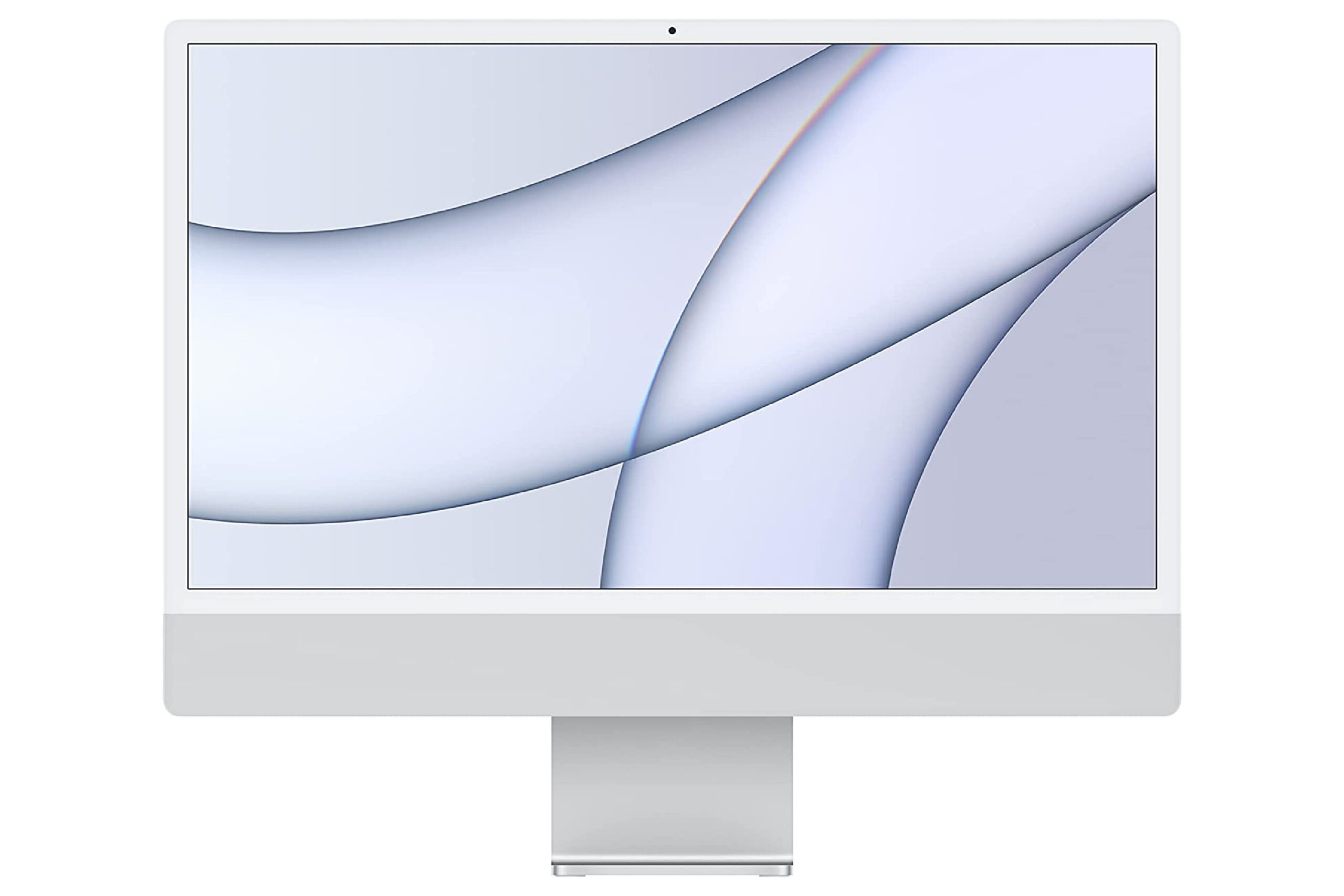
Apple has been a trusted name in the computer industry for decades, and the Apple All-in-One iMac is no exception. Boasting a strikingly thin display, this computer features an immersive 24-inch 4.5K Retina display with a wide color gamut and 500 nits of brightness, so you can use it to watch content in stunning clarity. It's powered by the M1 chip, which helps with performance and efficiency, and a 7-core GPU, so you can run multiple applications at once without the device slowing down.
The Apple All-in-One iMac comes with a powerful three-mic array for crystal-clear FaceTime calls and studio-quality speakers for immersive sound when watching movies or playing games. It also has a Magic Keyboard with Touch ID so you can log in quickly and securely every time without having to type a password. Unlike other computers, this device comes equipped with up to 16 gigabytes of unified memory, allowing you to boot and launch apps faster than ever before.
You'll be able to store all of your data on the 2-terabyte SSD. On top of all these features, the computer has four USB-C ports, including two Thunderbolt ports, so you can connect multiple devices to it. Because of its efficient performance, sleek display and exceptional memory, the Apple All-in-One iMac stands at the top of our list.
Lenovo Legion 5 Gaming Computer — Best For Gamers
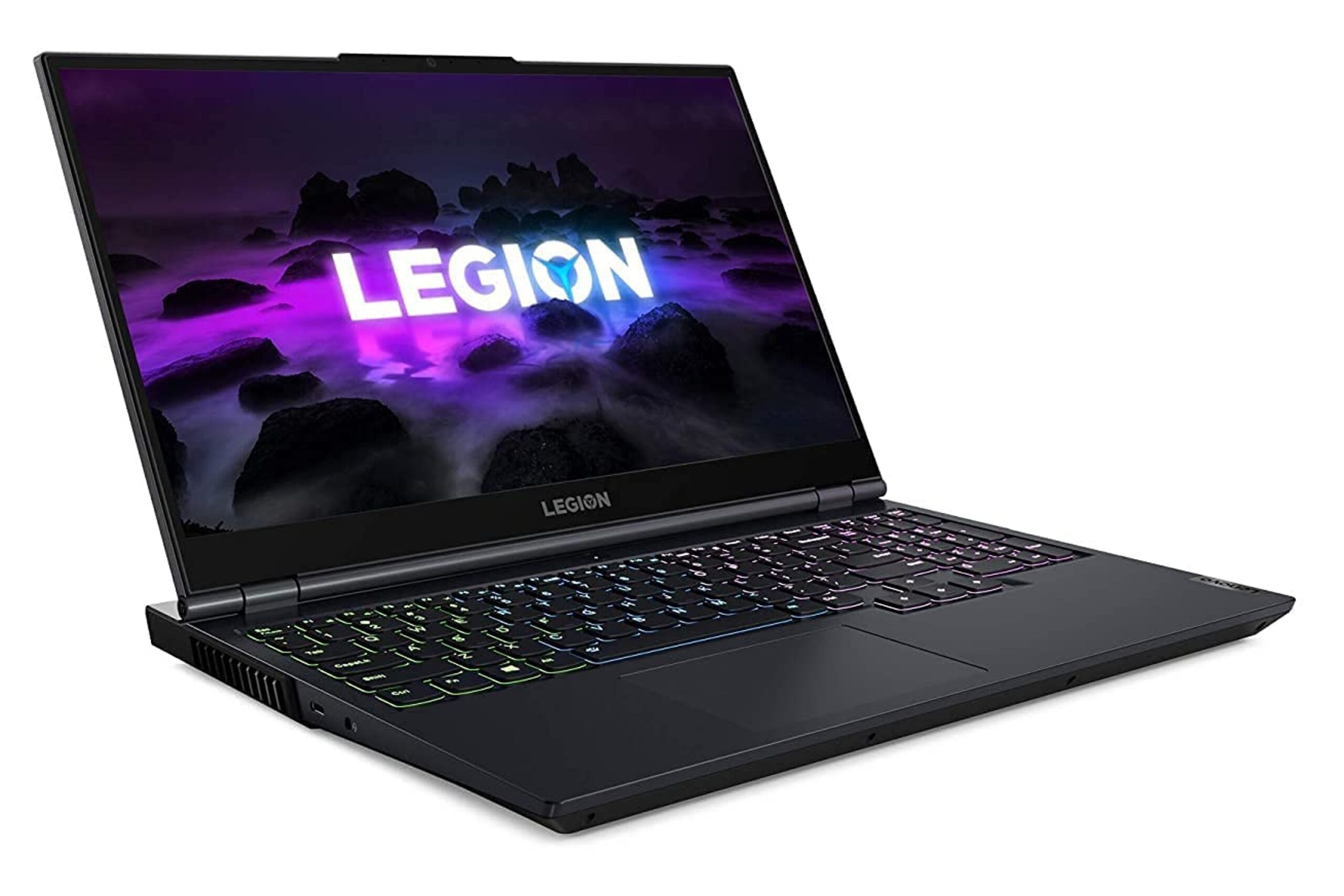
Featuring a 15.6-inch screen and an IPS display, the Lenovo Legion 5 Gaming Computer delivers rich and vibrant visuals to make your experience exceptionally immersive. The device comes equipped with a NVIDIA GeForce RTX 3050 Ti graphics card, so you can play the most demanding and fast-paced games without lag or stuttering.
The Lenovo Legion 5 Gaming Computer is powered by eight high-performance cores and 32GB RAM, making it ideal for multitasking. The device also has a 2TB HDD, so you can store your files and games on it without having to worry about space limitations.
Unlike other gaming computers, the Lenovo Legion 5 has a TrueStrike keyboard with a 4-zone RGB backlight, allowing you to customize your keyboard to match the rest of your gaming setup. Thanks to its 2×2-watt speakers with Nahimic Audio, you can expect a rich audio experience while watching videos, playing games or listening to music. Lastly, the computer features four USB ports, as well as an HDMI port, so you can connect multiple devices simultaneously.
HP Intel Iris Computer — Best Battery Life
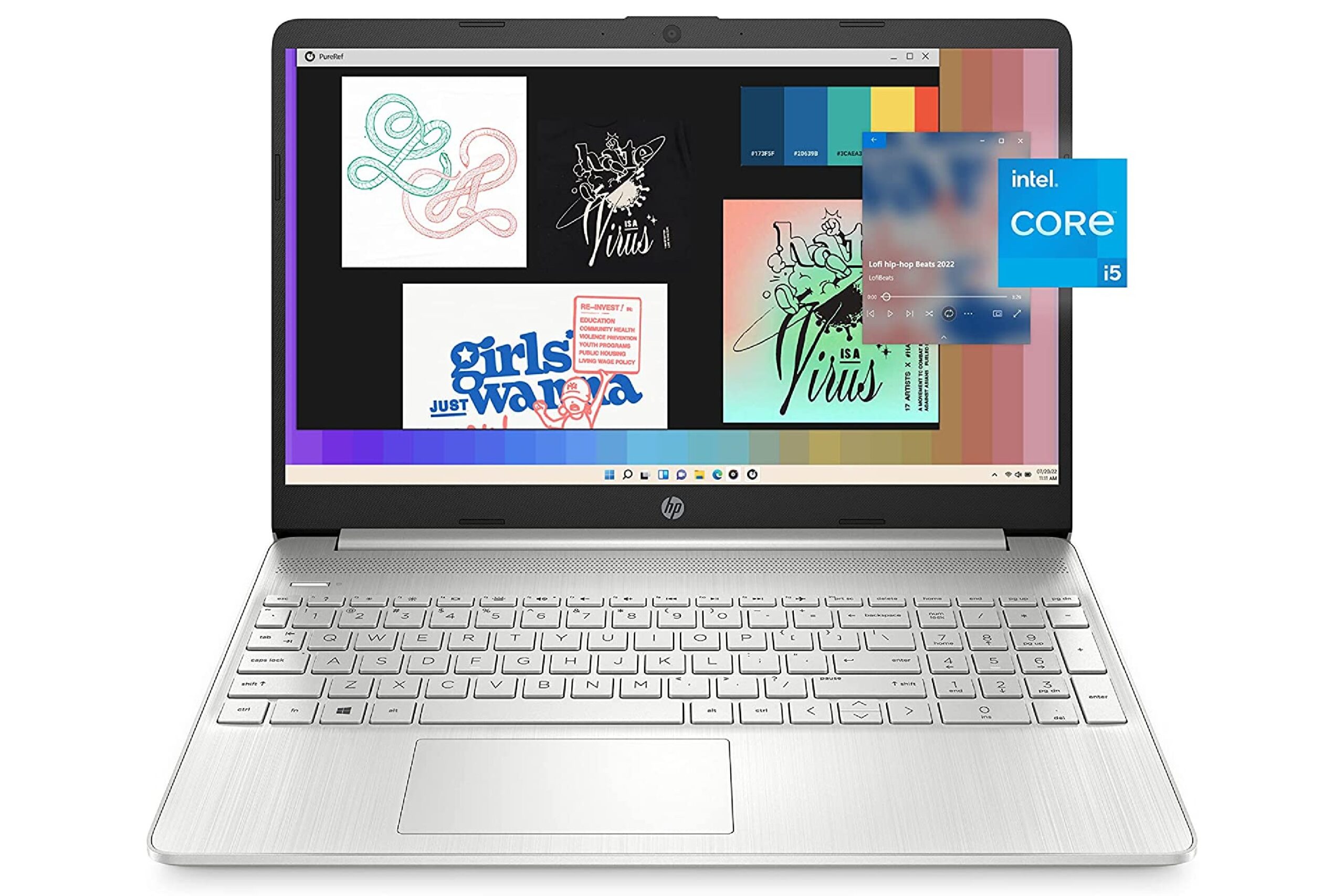
The HP Intel Iris Computer features long battery life and fast charge technology, so you won't have to worry about whether you'll have enough juice for a long day's work. Additionally, it's a powerful and affordable laptop that features a 15.6-inch full HD display, which provides crisp, clear images and offers a broad viewing angle. The device also features an anti-glare display to ensure that you can work wherever you want without being distracted by reflections on your screen.
The computer is powered by a 12th Generation Intel Core i5-1235U processor that is capable of keeping up with the most demanding tasks and games. Its 8 gigabytes Double Data Rate (DDR) RAM allows for plenty of multitasking, easily switching between documents and applications without skipping a beat.
This HP Intel Iris Computer is also equipped with a full-size keyboard with a numeric keypad, which allows you to type comfortably, increasing your productivity. The computer's sustainable design is based on post-consumer recycled plastic, and its Energy Star-certification means its impact on the environment is minimized.
Acer Aspire AIO Computer — Great for Peripherals
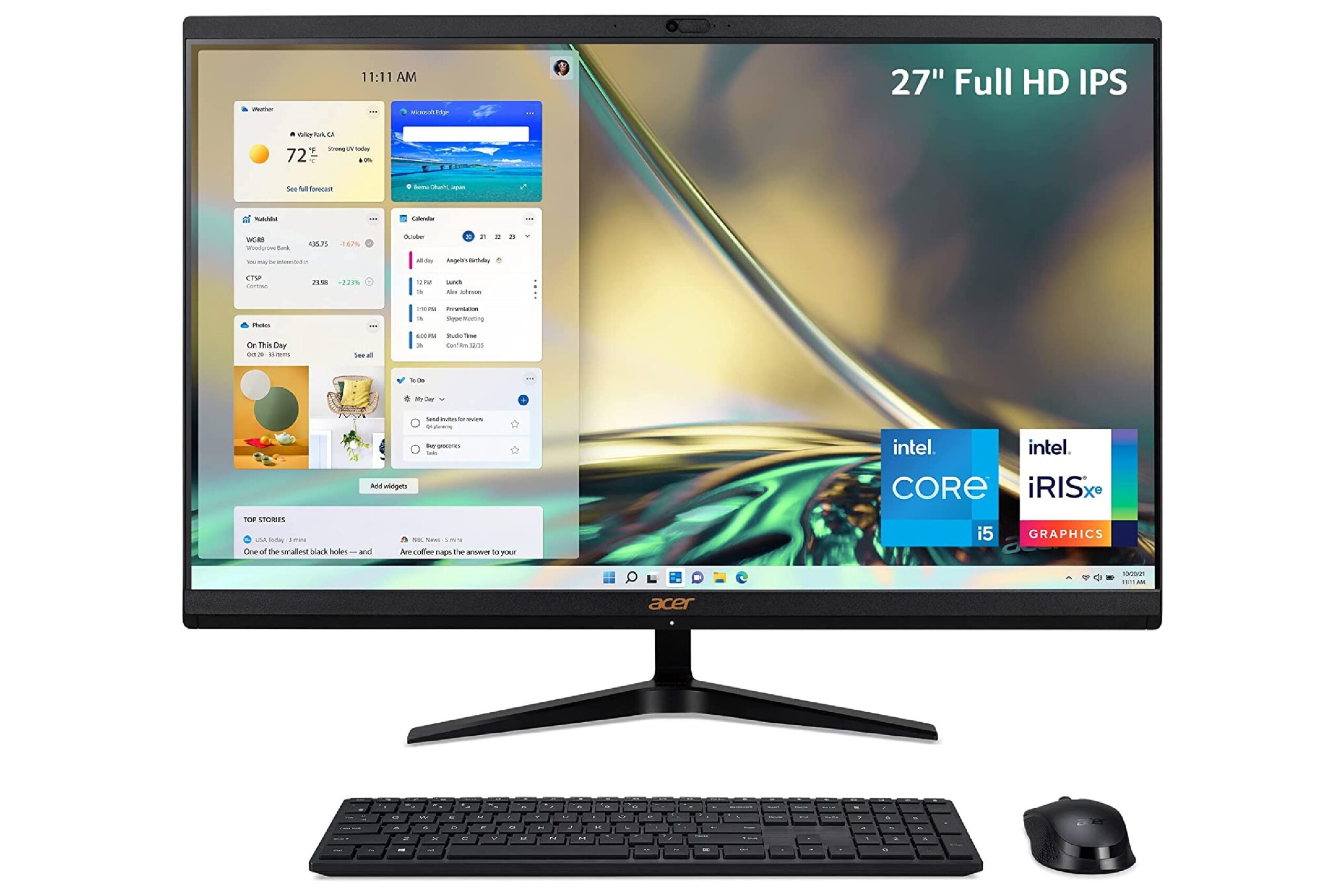
The Acer Aspire AIO Computer comes with several ports, including USB 3.0 ports, an HDMI port, a DisplayPort port and a RJ45 Ethernet port, so you can connect all your devices together easily without having to switch cables around or use multiple adapters.
Additionally, it's a great choice for anyone looking to add some power to their home office. With a 27-inch Full HD display and an Intel Core i5 processor, this computer is sure to boost your productivity. It also features Intel Iris Xe Graphics, so you can expect a seamless user experience.
The Acer Aspire AIO uses BlueLightShield technology to lower exposure to blue light for eye comfort, and its integrated 5.0 MP webcam ensures that your video conferencing calls are top notch. Its fast Wi-Fi connection means you can stream movies or music directly from your computer to any compatible device in your home without needing to connect an external device or router. The computer also comes with 16 gigabytes of DDR4 3200 megahertz memory and 512-gigabyte NVMe SSD, which provides plenty of storage room for photos, videos and documents.
HP 27 Pavilion All-in-One Computer — Best Visuals
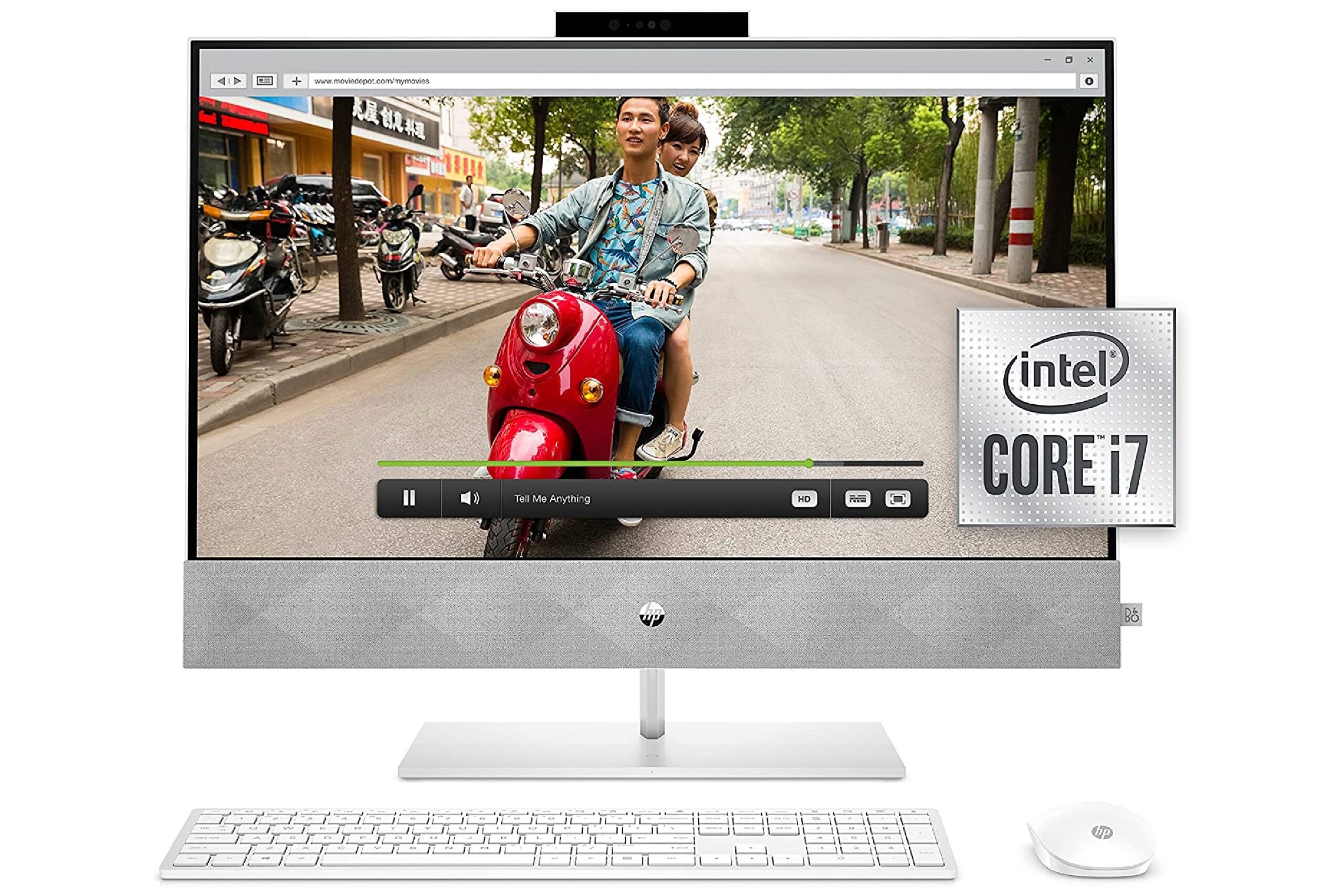
The HP Pavilion Computer is the perfect blend of style, performance and value. Boasting a full HD resolution, this computer features an edge-to-edge display that shows off every detail in jaw-dropping clarity. The device is powered by a 10th Generation Intel Core i7-10700T processor, which lets you play games or watch movies with no lag or buffering issues.
The HP 27 Pavilion All-in-One also has 16 gigabytes of RAM and an Ultra-High-Definition (UHD) Graphics 630 card that provides incredible graphics performance. Featuring audio by B&O, this desktop computer delivers an amazing sound experience for your entertainment or productivity needs. The computer was designed with blue light technology and a flicker-free screen that helps improve eye comfort while working for long periods of time.
With dual storage options that include up to 512-gigabyte SSD and 1-terabyte HDD, you can store all your photos, videos and music on the device. The HP 27 Pavilion All-in-One comes with a one-year hardware warranty, so you can buy it with complete peace of mind.
How To Purchase Your Next Computer: A Buying Guide
Whether you're planning to upgrade your current desktop computer or want to install a new gaming setup, choosing a computer from a solid range of options can quickly become a daunting task. We've jotted down this detailed guide to help you purchase the right computer for your needs.
Types Of Desktop Computers
Full-Sized Computers
Full-sized computers are large devices that require plenty of room to set up, be it under or on top of your desk. This type of computer has separate display and processing components, which makes them easier (and less expensive) to repair and upgrade. The most characteristic component of full-sized computers is their case or chassis, called a tower, which contains most of the hardware and comes in many different shapes and sizes.
Compact Computers
Compact computers, also known as Mini PCs, can be almost half the size of full-sized desktops. They are typically slim, inexpensive units designed for basic tasks, such as web browsing and processing documents. They're an ideal choice if you have limited space under your desk or plan to put the computer on a small-sized desk.
All-In-One Computer
All-in-one units combine monitor and computer to occupy less space and improve portability. In addition to a reduced physical footprint, they are thoughtfully designed to look less stodgy than conventional computers. The downside of all-in-one units is that they're typically more expensive and, because all the components are tightly packed behind the display, upgrading and repairing these models is a bit difficult.
Gaming Desktop
Pre-built gaming computers generally come with the fastest processors, large hard drives, the most sophisticated graphics cards and lots of video RAMs. These units tend to be enclosed in large cases and offer enough room for additional components, such as dedicated sound cards and extra memory. As a result of their high-end hardware and spacious cases, gaming models are on the expensive side.
How To Choose Hardware For A Computer
CPU/Processor
The CPU (central processing unit) is a chip that functions as the brain of your computer and does most of the work for your unit. Whenever you need to change or access data from your system, the CPU is the one executing the task. Better CPUs can process data at quicker intervals, but you shouldn't solely rely on a unit's speed to form a whole picture of its performance.
Newer is always better with CPUs: recent models will almost always deliver greater performance. However, you don't have to worry about buying a chip outside the midrange options unless you intend to do intensive tasks, such as video editing, 4K gaming or using drawing software like AutoCAD.
Graphics Processing Unit (GPU)
The GPU is a chip responsible for generating all the images that show up on your screen. Some laptops come with integrated graphics, in which case the component is mounted on the main processor for improved safety.
Memory
RAM (random-access memory) is a piece of dedicated hardware that allows you to temporarily store information and access it immediately. All current tasks on your computer are stored in its RAM drive, so the greater your RAM, the more information your device can retrieve. But RAM doesn't store data indefinitely, and you will lose the data held in the RAM once your device loses power.
As a rule of thumb, it's better to go for eight gigabytes of memory if you aren't sure how much RAM you need. You can upgrade to 16 gigabytes of RAM later if you start using more demanding software and applications.
Storage
The amount of storage space on a computer's internal drive depends on its capacity of holding data indefinitely. All data, ranging from downloaded music to installed programs reside on the internal storage of your device. Data storage doesn't need to be in use and an installed program that you aren't currently using will take up storage space in your computer but won't affect its memory. Many modern models use solid-state drives (SSDs) because they are more reliable and faster than conventional hard drives but cost you more when compared to other options of identical capacities.
People Also Asked
How long a warranty should my desktop have?
Manufacturer warranties for desktop computers typically cover components and labor for one year, with longer durations (up to five years) available for an extra fee. Check your credit card's benefits guide before shelling out extra cash to extend the warranty. The card's issuer may already be covering any unexpected damages for a certain span of time following your purchase, and may even be covering the rest of the company's guarantee.
If you want to retain your desktop for several years and your credit card company does not provide coverage, ask about the cost of additional coverage. You may get extended warranties from $100 to $300 from various manufacturers and dealers. It's better to invest the money in backup drives or services that reduce downtime and protect irreplaceable data if a warranty will cost over 15% of the desktop's initial price.
I am on a budget. Should I buy a refurbished computer?
If your budget is somewhere between the range of $200 to $500, think about purchasing a refurbished model. After renting desktop computers in bulk for a few years, big businesses often sell or lease them back to refurbishers who then resell them. You can locate "off-lease" or reconditioned systems by searching or filtering the product category pages in online electronics stores.
Many of these second hand computers are desktop towers, making them simple to replace or repair if a component fails. They can cost as little as $150 to $250. The downside of this is that some of their parts are often a few generations behind and might not be in great aesthetic shape, plus the quality control standards of individual refurbishers can vary widely.
Should I get a desktop with USB-C or a Thunderbolt 3?
While USB-C is more ubiquitous on laptops, it is also making its way into desktop designs. There are lots of USB-A to USB-C cables available, so it's not technically required, but make sure to monitor the packaging for your new system nonetheless.
Thunderbolt 3 has the highest bandwidth of any USB-based cable connection currently available, allowing for speeds that easily outpace those of normal USB connections. Unfortunately, it's even rarer on PCs than USB-C. You can only get it with an Apple or Intel PC. However, if you opt for an Intel PC and Thunderbolt 3 isn't built in on the system, you can always add a PCI Express expansion card to your setup.
Should I get a laptop or a computer?
Portability and ergonomics are the deciding factors between a desktop and a laptop. The portability of laptops makes them useful, but the smaller screen means they aren't as comfortable to use as desktop computers. In contrast, a desktop computer is difficult to carry around and requires a stationary keyboard and mouse.
Think about the tasks you'll perform on your device and choose one accordingly. A desktop computer is preferable for intense tasks like gaming, whereas a laptop is more practical for general internet use and checking your email.
When should I buy a computer?
It may be time to upgrade to a new computer once your current device struggles to run the programs you need. The best deals on desktop PCs are typically found on Black Friday and Amazon Prime Day, but you can find a good price on quality PCs pretty much any time of the year.
What's the service life of a computer?
Most desktop computers last at least three years. With the right upgrades and maintenance techniques, you can extend the life of your device to between five and eight years. Regular servicing is essential to maintain your computer in tip-top shape, for example, since dust can cause certain computer parts to deteriorate.